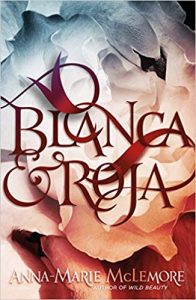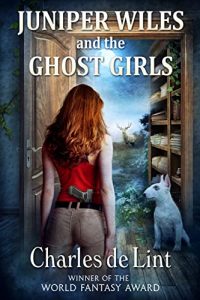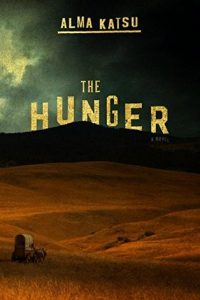Colleen Mondor Reviews Blanca & Roja by Anna-Marie McLemore
 Blanca & Roja, Anna-Marie McLemore (Feiwel & Friends 978-1-250-16271-7, $17.99, 367pp, hc) October 2018.
Blanca & Roja, Anna-Marie McLemore (Feiwel & Friends 978-1-250-16271-7, $17.99, 367pp, hc) October 2018.
Anna-Marie McLemore follows up her gorgeously crafted novel Wild Beauty with an equally lush and luminous take on the fairy tale of “Snow White and Rose Red”. Blanca & Roja is the story of two sisters who labor under a generational curse. One is light and the other is dark. One is agreeable, the other difficult. One will become a swan, the other will be left behind. And both of them are furious about what is going to happen.
Blanca and Roja are loving sisters who have been determined since a young age to challenge the curse on the del Cisne family. For generations their family has lost a girl to the swans who relentlessly collect their debt. When the youngest of two del Cisne daughters, and there are always two, turns 15, the swans arrive and the choice is made. One of the girls transforms and flies away, the other is abandoned, and the wait begins for the cycle to start again.
In a word, this is a lousy destiny and Blanca and Roja have been mad about it for years. After trying everything they can to make the choice impossible for the swans, Roja turns 15, their extended family descends upon them to witness the change, and the girls find themselves pushed to accept their fate. All this would be predictable, except there is another story of two other teenagers lurking in the background: two boys who went missing in the woods with transformations that are also part of their destiny.
In the original “Snow White and Rose Red” there is a prince who becomes a bear, a character who also appears (in a less princely guise) in McLemore’s tale. Barclay Hart is running from his past and a family circle of violence that has seen him simultaneously suffer and succumb to his brutal tendencies over the years. His voluntary sojourn in the woods is a respite from the great weight he carries, a place to hide as he plans what will come next. What he didn’t expect was that his escape would prompt a similar action by his best friend Page, the character who is facing the greatest transformation of all.
In the shifting points-of-view from one teen to the next (all clearly delineated by the chapter headings), McLemore delves deeply into how each perceives the other, all the confusions and concerns that arise from words left unsaid or actions misinterpreted (so many ways to take something the wrong way!) and, when it comes to Page, the fluidity of transformation. Page has been struggling with identity for a long time, as explained in this exchange with Blanca:
“You’re a boy, right?”
Page nodded. “Yeah.”
“But she or he,” I said, careful on each word, remembering that day in front of the flower shop, “both of those work?”
“Yeah,” Page said, the same kind of level as the first yeah. “Just please don’t call me a girl. Or young lady. They never really fit me.”
“But doesn’t she get you called girl and young lady?” I asked.
“Maybe,” Page said. “It shouldn’t though. Him and her, I kinda like getting called both. It’s like all of me gets seen then. Doesn’t usually happen though. Most people can’t get their head around boy and she at the same time, I guess.”
Later, Barclay, considers his fears about Page’s parents, who have struggled to understand their child’s shifting identification. He thinks:
I didn’t want them in his head. I didn’t want him remembering that look they gave him, the awful, frightened, evaluating look like they’d never see anything quite like a Page Ashby before. It was the world’s job to take Page as he was. Forget anyone who couldn’t.
In this world, our world, two girls could be facing a life as a swan, a boy could hide in the trappings of a bear, and another child could choose both him and her. This is fairy tale and real world, terrifying and liberating, a curse of fear and the work of love. McLemore, just as she did with Wild Beauty, pulls all of this off brilliantly.
I was struck again while reading Blanca & Roja by just how perfectly matched the author’s literary style is to the magic realism of fairy tales. She evokes a dreamy quality with her words, making all of her stories believable and yet also, obviously, just slightly more than we know to expect in the real world. A singular talent, and a stunning wordsmith, with Blanca & Roja, McLemore goes further down the unique path she has made for herself. What a wondrous book for teenagers to discover.
Colleen Mondor, Contributing Editor, is a writer, historian, and reviewer who co-owns an aircraft leasing company with her husband. She is the author of “The Map of My Dead Pilots: The Dangerous Game of Flying in Alaska” and reviews regularly for the ALA’s Booklist. Currently at work on a book about the 1932 Mt. McKinley Cosmic Ray Expedition, she and her family reside in the Pacific Northwest and Alaska. More info can be found on her website: www.colleenmondor.com.
This review and more like it in the May 2019 issue of Locus.
 While you are here, please take a moment to support Locus with a one-time or recurring donation. We rely on reader donations to keep the magazine and site going, and would like to keep the site paywall free, but WE NEED YOUR FINANCIAL SUPPORT to continue quality coverage of the science fiction and fantasy field.
While you are here, please take a moment to support Locus with a one-time or recurring donation. We rely on reader donations to keep the magazine and site going, and would like to keep the site paywall free, but WE NEED YOUR FINANCIAL SUPPORT to continue quality coverage of the science fiction and fantasy field.





